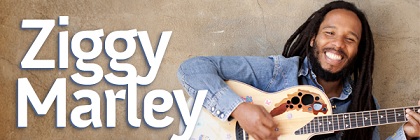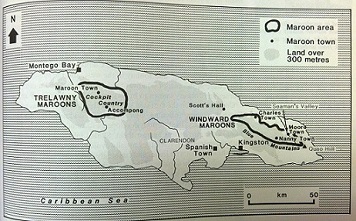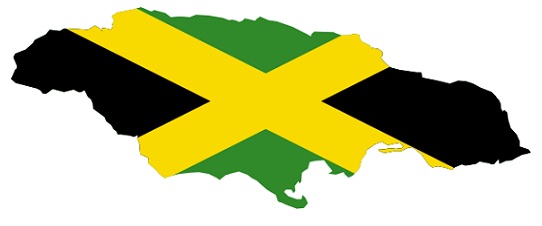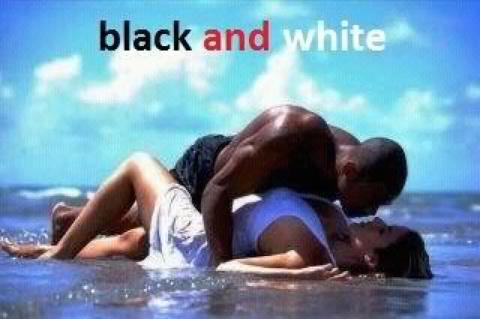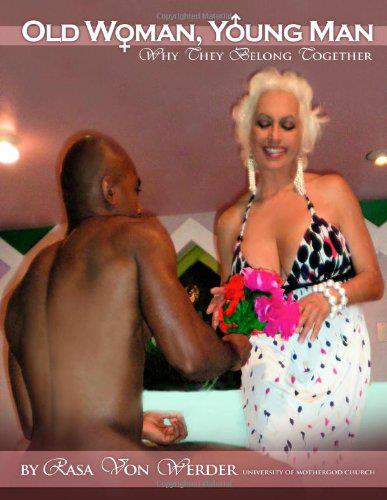by Stephen J. Pavlidis
The history of the Maroons is the saga of Africans who refused to live in slavery, and it begins on the island of Jamaica with the fleeing of the Spanish in 1655. At that time the Spanish had a settlement west of present day Kingston at St. Jago de la Vega, St. James of the Plain, which is now known as Spanish Town. When some 8,000 British troops attempted to take the town on May 11, 1655, the Spaniards surrendered, but secretly prepared to flee. They freed some 1,500 slaves, emptied the town of anything of value, and fled into the hills before the British ever set foot in the town.
When the British arrived in St. Jago de la Vega they found it empty and in anger destroyed most of the settlement. The freed slaves fled to the mountains and were organized into a fighting force by Don Cristóbal Amaldo de Ysassi, the Spanish Governor of Jamaica at the time. De Ysassi’s plan was for the freed slaves to harass the British troops until the Spanish could return and retake the island.
These freed slaves, who would later become known as the Maroons, settled primarily in two areas of Jamaica. Some settled in St. Catherine Parish and the Trelawney Cockpit Country, also known as the Land of Look Behind, in the south and central part of Jamaica, and became known as the Leeward Maroons. The Leeward Maroons always had a strong leader and their main settlement was located at Old Town, now called Accompong. Other Maroons settled in the northeastern part of Jamaica, in the Blue Mountains and the John Crow Mountains and are called the Windward Maroons and today can be found in places like Moore Town, Scott’s Hall, and Charles Town. The Windward Maroons did not have a central leader, instead they formed into small groups in different communities with different leaders, each group cooperating with the other as the need arose.
The name Maroon is the British corruption of the Spanish cimarrones, meaning wild or untamed. Living in inaccessible regions of Jamaica, the numbers of the Maroons grew as more and more runaway slaves fleeing from the new British plantations, flocked to their cause. With their continual raiding of the British plantations, the Maroons rapidly became a thorn in the side of the British colonists. Unique among all Africans that were brought to the New World as slaves, the Maroons earned for themselves an autonomy that no other African slaves could.
In 1690, a large group of slaves from Clarendon, consisting mainly of Coromantees, an extremely brave and warlike people from Africa’s Gold Coast, today’s Ghana, rebelled and escaped into the interior of Jamaica. They aligned themselves with the Spanish-freed Maroons and a great leader emerged, Cudjoe.
Legend tells us that Cudjoe was short, thick-necked and almost bear-like in appearance, as well as a fierce, cunning fighter, Cudjoe, his two brothers Accompong and Johnny, and his followers vowed to have freedom from British enslavement or death, reminiscent of Patrick Henry’s motto of “Give me liberty or give me death.” Cudjoe, and his Windward Maroon compatriots Quao and Cuffee, fought the British to a standstill in what has been described as a decade long campaign of robbery and murder that began in 1729 and is now known as the First Maroon War.
The Maroons were bound by a sacred oath that all men had to take to show loyalty and to keep Maroon secrets. Any runaway slave who refused to take the oath was put to death, the Maroons could not afford security risks and the casual runaway was certainly that. Such runaways might stay a few days or a week or two and then wander off only to be captured, and in order to save their own hide would divulge the locations of the Maroon settlements. Women were not bound by the oath and most of the intelligence that the British troops received on the Maroons came from captured women.
The Maroons were highly dependent on nature to survive. The Maroons could not farm on a large scale. To farm, one needed to clear and burn the land, and smoke would give away the Maroon positions to the British. But the Maroons would make do the best way they could, relying on the knowledge of nature that they brought with them from Africa. They managed to use the environment very efficiently to take care of all their basic needs, nourishment, shelter, and protection from the soldiers that hunted them. Most people are not aware that jerk pork, pork cooked over pimiento wood, began with the Maroons who invented it as a way of cooking and preserving meat with little or no smoke.
Besides the supplies that nature provided, the Maroons needed guns, and they had precious few, so they took some from dead British soldiers, stole some, and traded for some. The Maroons were very successful at raiding the British plantations, coming in out of the mist and taking whatever they needed, food, arms, or slave women (the Maroons were so successful in capturing slave women that by 1730, the number of women and children in Nanny Town and Guy’s Town exceeded the number of men). It is said that during these raids some Maroons would kill any white man they met.
In their dealings with the British troops, nature also played a huge role in the success of the Maroon warriors. The Maroons developed camouflage and ambush techniques that took many an unwary British soldier’s life. The cacoon vine, also called the five finger wiss, was a Maroon favorite for ambushing the British troops. The Maroons would peel strings off the vine, which also was used in the manufacturing of furniture, and stretched them over pitfalls like netting which was then covered with a layer of brush as camouflage. Pointed stakes were often set in the bottoms of these pits, much like the punji sticks that were used so effectively in Vietnam. Some of the Windward Maroons also used the white kernals hidden inside the seed pods of the cacoon vine in a stew they called Rundown.
The Maroons would also camouflage themselves, bushing up was the term they used, to make them impossible to spot against the trees and plants that surrounded them. The Maroons would also bathe in a mountain stream, scrubbing their bodies with the leaves of a certain plant that gave them a fresh lemon scent. Then they would lie in wait in the brush that emitted the same odor, camouflaging their scent. So good were the Maroons at camouflage that legends grew about them. It was said that the Maroons had the ability to appear and disappear at will, to stand so still in the evergreen that a party of soldiers could walk right past them and not see them. When they raided plantations it was said that the guard dogs could not even detect their approach. So successful were they that the could not be found by Carib Indian scouts (brought in from the Mosquito Coast of Honduras) and Cuban slave hunters who were recruited by the British to find the Maroons. So successful were the Maroons that the Trelawney Cockpit Country of Jamaica became the Land of Look Behind for the British always had to look behind their ranks for a sudden ambush.
Maroon settlements, Maroon Towns as they were called, were constructed with security foremost. They were always set up in the mountains with the lower levels more easily accessible, and the upper levels almost inaccessible. Few if any British soldiers reached the upper levels. All Maroon towns were well supplied with food, and if the Maroons had to flee, they would escape to another equally secure town that was also amply supplied with food. The Maroons would maintain contact with one another by mimicking animal sounds such as birdcalls. So precise were they in this that they studied seasonal and mating calls so that they would make no errors that could be detected by Carib Indian scouts, who were also bush experts. Maroons also used a drum and the abeng horn, for more long-distance communications which were totally incomprehensible to the British.
Maroon towns always had a commanding view of the neighboring countryside, and keen-eyed Maroon sentries who would signal by blowing on an abeng horn when search and raiding parties appeared headed in their direction. The abeng, made from a cow’s horn, was able to produce many different sounds, each with its own meaning and able to be heard from great distances. The abeng blowers could relay information such as troop strengths, type of armaments, direction of travel, and even which paths the troops were taking. This gave the Maroons plenty of time to set up an ambush and before long British troops dreaded the sound of the abeng horn.
The British used many methods of tracking and fighting the Maroons. As mentioned earlier, they imported Carib Indian scouts from the Mosquito Coast of Honduras, but these were eventually wiped out. The British also had a certain number of renegade Maroons, those who had surrendered and never really had the heart to fight the long fight. The British also had a unit of slave soldiers called the Black Shots who were nearly as good as the Maroons in the woods. One, a man who came to be known as Captain Sambo, was a great leader who often embarrassed white officers with his drive and determination. Sambo was so competent that he eventually was promoted to Captain, freed, and later on, oddly enough, settled around the Nanny Town area in 1739 with his wife and children who were also freed.
The Amazing Queen called "Nanny"
A number of heroes have arisen out of the Maroon’s fight for freedom, and probably the best known is a lady known simply as Nanny. Nanny, who fought the British at the beginning of the 1700s, is often described as an almost supernatural Ashante warrior Queen who could catch musket balls and fire them back. Nanny was Cudjoe’s sister so it seems that courage and determination ran in their family. Nanny possessed exceptional leadership ability and was excellent in directing guerilla warfare to keep the British out of the Blue Mountains where she and some other Windward Maroons lived in a stronghold called Nanny Town. Nanny also kept the African traditions alive, handing down stories and legends to the younger Maroons and by encouraging music and songs that her people brought from Africa.
Nanny led numerous brilliant hit and run attacks on British plantations and troops and she played a large part in treaty negotiations with the British. Nanny did not trust the British and believed their treaties were just another means of subjugation (the British offered land and full freedom to any Maroon who surrendered). When British troops tried to attack her almost inaccessible stronghold in the Blue Mountains (after six years of searching for it), Nanny and her followers would dump vats of boiling water onto the troops from the heights above.
In 1734, Nanny lost her life to British troops when a British Captain named Stoddart led a successful attack on Nanny Town aided by Mosquito Coast Carib Indians, the Black Shots, and tracking dogs. The British soldiers managed to drag two cannons to the heights overlooking Nanny Town and Captain Stoddart leveled the town. The Maroon survivors fled deeper into the mountains, Nanny Town was reclaimed by the jungle, and the Warrior Queen Nanny was buried in Moore Town, just to the southeast of Nanny Town. Today Nanny Town is a place of legend where it is said the ghosts (duppys) of those who died in the battle still haunt the hills and that none but a Maroon may enter Nanny Town and return alive. It is said that the white birds that roost in the trees around Nanny Town cannot be shot, the pellets go right through them for they are the ghosts of the Nanny Town dead.
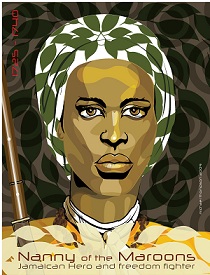 The British held Nanny Town for a year before the Maroons recaptured the town and occupied it between May and August of 1735. The British once again succeeded in driving off the Maroons and retaking Nanny Town, the harassed Maroons being driven deeper and deeper into the interior, low on provisions and ammunition, and suffering from fatigue, hunger, and sickness. The Windward Maroons separated into several smaller groups and began a long walk of some 150 miles to St. Elizabeth on the leeward side of Jamaica. Upon their arrival they were not greeted warmly by Cudjoe who said there were not enough provisions for his people much less the newcomers. Cudjoe blamed the Windward Maroons for provoking the whites when there was no need for such actions. He showed them graves of his own people that he had executed for murdering white men against his orders. Cudjoe told the Windward Maroons that their barbaric cruelty and insolence to the white man was the reason they were hunted like dogs and in time would be destroyed. Some historians suggest that this was a ploy and that the despotic Cudjoe simply did not want to share power with his eastern comrades.
The British held Nanny Town for a year before the Maroons recaptured the town and occupied it between May and August of 1735. The British once again succeeded in driving off the Maroons and retaking Nanny Town, the harassed Maroons being driven deeper and deeper into the interior, low on provisions and ammunition, and suffering from fatigue, hunger, and sickness. The Windward Maroons separated into several smaller groups and began a long walk of some 150 miles to St. Elizabeth on the leeward side of Jamaica. Upon their arrival they were not greeted warmly by Cudjoe who said there were not enough provisions for his people much less the newcomers. Cudjoe blamed the Windward Maroons for provoking the whites when there was no need for such actions. He showed them graves of his own people that he had executed for murdering white men against his orders. Cudjoe told the Windward Maroons that their barbaric cruelty and insolence to the white man was the reason they were hunted like dogs and in time would be destroyed. Some historians suggest that this was a ploy and that the despotic Cudjoe simply did not want to share power with his eastern comrades.
After the loss of Nanny and Nanny Town, Cudjoe found himself less secure, so he moved deeper into the Trelawney Cockpit Country to establish a new settlement and resume fighting the British. The Maroons, even though they were very successful guerilla fighters, found their situation getting desperate as their provision grounds were being destroyed and they were being forced into smaller and smaller areas. Cudjoe masterminded a massacre of British soldiers from a hiding spot in a cave that later was to become known as the Peace Cave, and after this tragedy, the British government sent a representative to Cudjoe to offer terms of peace. The Windward Maroons embraced Nanny’s stance against any treaty with the British, but stood by it in the end.
Cudjoe
On January 6, 1738, Cudjoe, and Colonel Guthrie of the British Army met and signed the peace treaty with an exchange of hats as a sign of friendship. Although historians claim that the treaty was signed under a huge tree called Cudjoe’s Tree (today called the Kinda One Family Tree), Maroon historians claim different. They say the Peace Cave was the sight of the official signing, Colonel Guthrie and Cudjoe performing a blood brother ceremony instead of exchanging hats. The official document is even harder to discern, some day that it is in the care of a trusted Maroon elder and its location a secret of the highest priority.
Cudjoe was appointed Chief Commander in Trelawney Town, a position now known as Colonel. The following year a similar treaty was signed by Quao, the chief of the Windward Maroons, in what is called Moore Town today. Cudjoe died and was buried in Old Town, now called Accompong after Cudjoe’s brother who took over leadership of the Leeward Maroons after the passing of Cudjoe.
The treaty gave official recognition to the Maroons as a free people and deeded them 1,500 acres of land. It also allowed them to administer their own laws, gave them freedom from taxes, allowed the Maroons to hunt wild boar anywhere except within 3 miles of a town or plantation, and it bound the Maroons to fight with the British should any outside party attempt to invade Jamaica, such as the French from Haiti or the Spanish form Cuba. The Maroons were also bound to hand over any new runaway slaves and in later years some Maroons became slave hunters.
After the signing of the peace treaty to end the First Maroon War, Jamaica was blessed with over 50 years of peace. Two later conflicts broke out, none of which involved the Leeward Maroons who remained neutral. The Maroons assisted the British in controlling their slaves, but the British were not happy about dealing with free Africans on their slave island. In 1795, the Second Maroon War broke out when some 300 Maroons in Trelawney Town revolted because two Maroons had been flogged in Montego Bay instead of being handed over to their own people for punishment. This time however the British were on top of things. They employed 5,000 troops and quickly rounded up the Maroons using large hunting dogs to flush them from their hiding places in the mountains and forced them to sue for peace. A reward of 10 pounds was offered for every Maroon captured during this period.
After the signing of the peace treaty to end the Second Maroon War, the British thought it time to get rid of the Maroon problem entirely. The government captured some 543 Maroons and exiled them to Halifax, Nova Scotia, on June 26, 1796. The Maroons worked on the fortifications at Citadel Hill in Halifax, and later built a settlement called Preston while the Canadian government provided religious instruction and schooling, happy to be assisting in the civilization of these new settlers.
The Canadians feared the French might attack and try to recapture Nova Scotia and organized the Maroons into seni-military units complete with vests, jackets, and metal buttons with the insignia of an alligator holding a wheat sheaf and an olive branch. But the Canadian winters of 1796-1798 took their toll on the Maroons, killing some, and shortening the tempers of those who survived. In the spring of 1799, a Canadian military unit arrived in Preston to maintain order and withheld valuable supplies to do so. The Canadian government was finding that the Maroons were not the fine settlers they first thought them to be and decided that the best course of action was to remove the Maroons from Canadian soil. After much negotiation with the government of Sierra Leone in West Africa, the Maroons were shipped off to Freetown Harbour, Sierra Leone, on October 1, 1880, completing a circle begun almost two centuries before when the Maroon’s ancestors were stolen from their homelands in West Africa.
Today, in Jamaica, the descendants of the Leeward and Windward Maroons can still be found in Accompong, Moore Town, Scott’s Hall, Trelawney Town, and a couple of other small settlements, all led by a Colonel who is elected to a five-year term (at one time it was a lifetime position). Today’s Maroons are no different in appearance than any other Jamaican that you might see sipping rum or hunting wild boar, but they maintain that they are not part of independent Jamaica and don’t mix with other people of the country and are forever cautious of outsiders. Every January 6, the Maroons of Accompong celebrate the signing of the 1739 peace treaty with eating, drinking, singing and dancing to the beat of the Maroon drum and the blowing of the abeng, and they recall when their ancestors fought the mighty British army to a draw.
www.seaworthy.com
http://members.tripod.com/livi_d/history/history.htm
http://sarabe3.tripod.com/israeliteimages.html
BBC - Marcus Garvey: Jamaica's first national hero
see the amazing queen: Nanny of the Windward Maroons
When Africa rises, the whole world will rise with her
Jamaica, a bit of the whole world - part new world, part old world, part Empire, part Caribbean, part Africa with all its richness and rhythm (Jamaica is the world)
Gift of the Nile : the first Bible gave us civilization itself - scholar says it was Ethiopia who gave us civilization and the arts, science, astronomy and astrology
yeye.olade : aboriginal Bible out of the Nile and east Africa (primitive spirituality that could one day save the world)
Africa Unite : Marcus Garvey appealed for a Back to Africa consciousness, but African spirituality is for the whole people
Ancient Kush, the land of Ethiopia the first jews were true semites (Abraham original of the hanif faith of primordial spirituality)
Zion the strong, Zion the beautiful - Is not mother Africa the birthplace of us all?
This land has got SOUL - Ethiopia may one day take us back to Eden
Scotchies - Jamaican Jerk Centre - cuisine in which meats are dry-rubbed with a very hot spice mixture called Jamaican jerk spice.
White cougars - affluent female "sexual tourists" flocking to Jamaica - is there something that they aren't getting from the fellas back home?
BBC exclusive : Jamaica's Golden Jubilee - fifty years since Independence.
